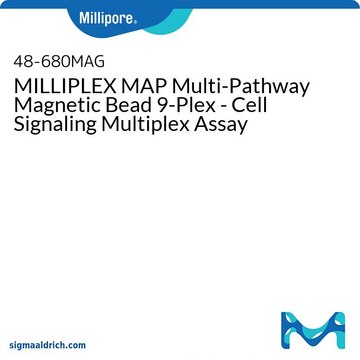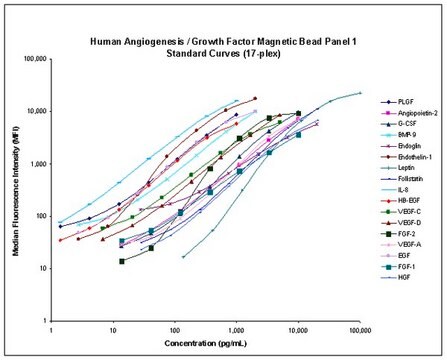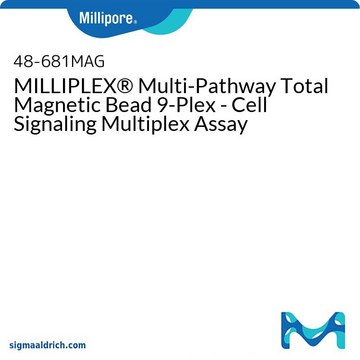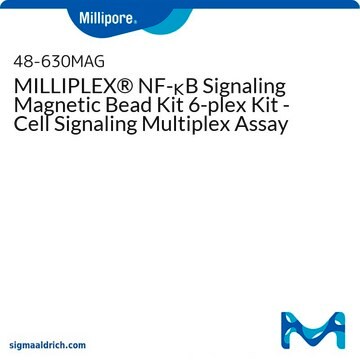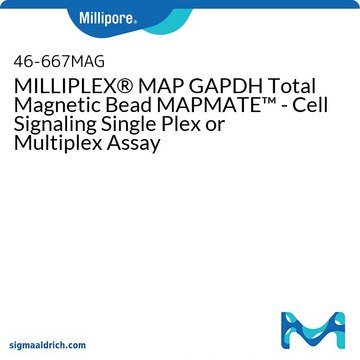48-610MAG
MILLIPLEX MAP STAT Cell Signaling Magnetic Bead 5-Plex Kit - Cell Signaling Multiplex Assay
Synonyme(s) :
Magnetic Bead STAT Kit, STAT Cell Signaling Kit
About This Item
Produits recommandés
Espèces réactives
human
Niveau de qualité
Fabricant/nom de marque
Milliplex®
Technique(s)
multiplexing: suitable
Méthode de détection
fluorometric (Luminex xMAP)
Température de stockage
2-8°C
Description générale
Spécificité
Application
- An overnight (4°C) incubation is recommended for best results.
- This assay requires 25 μL diluted cell lysate per well.
- This kit must be run using Assay Buffer 1 (provided).
- 1 - 25 μg cell lysate/well (recommended starting concentration is 40 to 1,000 μg protein/mL).
Signaling|Apoptosis & Cancer
Conditionnement
Stockage et stabilité
Informations légales
Clause de non-responsabilité
Mention d'avertissement
Danger
Mentions de danger
Conseils de prudence
Classification des risques
Acute Tox. 4 Oral - Aquatic Acute 1 - Aquatic Chronic 2 - Eye Dam. 1 - Skin Irrit. 2
Code de la classe de stockage
10 - Combustible liquids
Point d'éclair (°F)
Not applicable
Point d'éclair (°C)
Not applicable
Certificats d'analyse (COA)
Recherchez un Certificats d'analyse (COA) en saisissant le numéro de lot du produit. Les numéros de lot figurent sur l'étiquette du produit après les mots "Lot" ou "Batch".
Déjà en possession de ce produit ?
Retrouvez la documentation relative aux produits que vous avez récemment achetés dans la Bibliothèque de documents.
Contenu apparenté
Uncover how cells communicate with MILLIPLEX® cell signaling multiplex assays. Multiplexing with cell signaling phosphoprotein assays based on Luminex® xMAP® technology helps researchers measure phosphoproteins and total proteins within the same or different pathways from a single sample.
See how MILLIPLEX® multiplex immunoassays offer researchers the ability to simultaneously quantitate a large number of human cytokines, chemokines, and growth factors, and detect human immunoglobulins against SARS-CoV-2 antigens, to better understand the immune response to COVID-19, including cytokine storm.
See how multiplexing the inflammation signaling pathway with MILLIPLEX® inflammation assays or cell signaling assays can help researchers bridge the gap between immunology and cell signaling, including investigating T cell signaling, Th Cell differentiation, inflammatory response signaling, and sepsis signaling.
Notre équipe de scientifiques dispose d'une expérience dans tous les secteurs de la recherche, notamment en sciences de la vie, science des matériaux, synthèse chimique, chromatographie, analyse et dans de nombreux autres domaines..
Contacter notre Service technique
